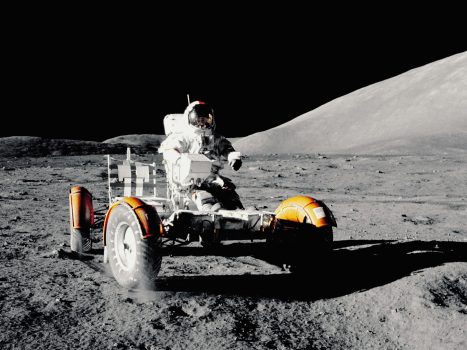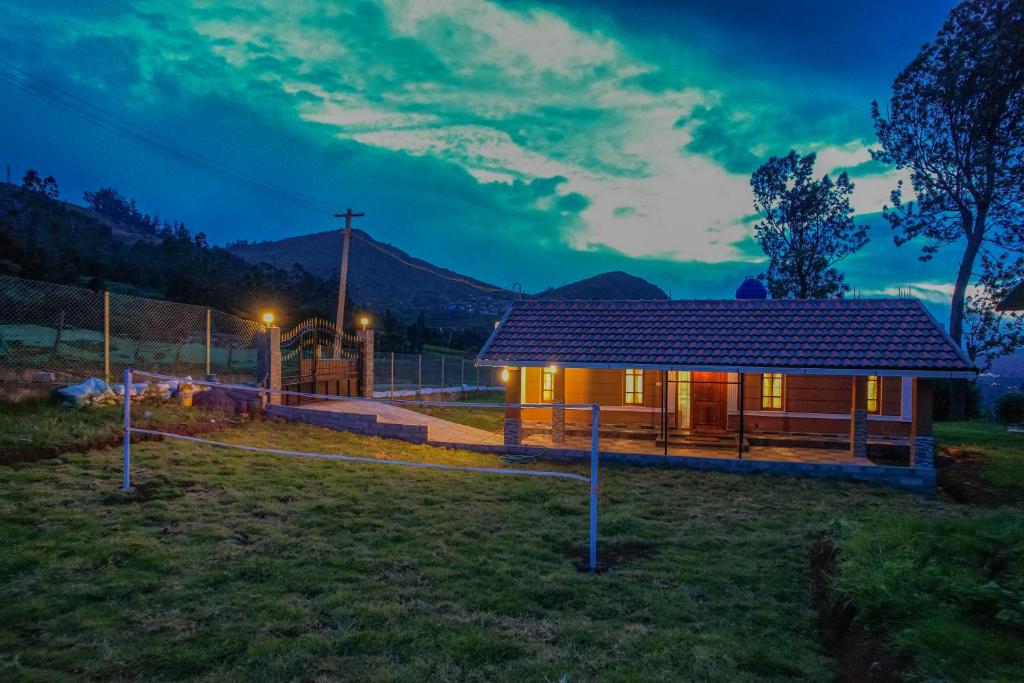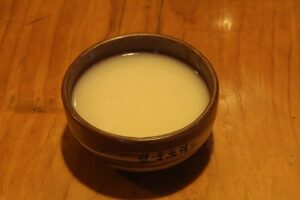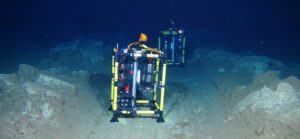The Moon’s surface is covered with a layer of fine dust and rocky debris known as regolith. Interestingly, this regolith is rich in oxygen-containing minerals. Scientists have developed a method called molten regolith electrolysis to extract oxygen from these minerals. This process involves heating the lunar soil to about 950°C and then passing an electric current through it.
 Pin
Pin Photo from Wikimedia Commons
The electric current breaks down the chemical bonds, releasing oxygen gas. This technique not only provides a potential source of breathable oxygen for future lunar inhabitants but also offers a way to produce oxygen for rocket fuel, making space missions more sustainable. The European Space Agency has been actively researching this method, aiming to create a pilot plant that could operate on the Moon. By utilizing the Moon’s natural resources, we move closer to establishing a permanent human presence on our lunar neighbor.
Table of Contents
Why do we even need oxygen on the Moon?
Oxygen is life. Without it, there’s no breathing, no fire, and no way to make rocket fuel. If humans want to live on the Moon for long periods, carrying oxygen from Earth isn’t practical—it’s too heavy and expensive. So, the only real option is to make it there.
The Moon doesn’t have a breathable atmosphere, but its soil (called regolith) is full of oxygen—just locked inside minerals. The challenge is getting that oxygen out. Scientists are working on ways to extract it, and if they succeed, future Moon missions will be way more sustainable.
Making oxygen on the Moon means astronauts won’t have to rely on constant supply shipments. They could breathe easier (literally) and even refuel rockets for deep space missions. Instead of a short visit, humans could actually settle there. This is why figuring out how to extract oxygen from lunar soil is a game-changer for space exploration.
It’s not just about survival; it’s about opening a whole new chapter for humanity.
The Moon is basically a giant oxygen storage—just not in the way we need
At first glance, the Moon seems like the worst place to find oxygen. No air, no plants, nothing that screams “breathe here.” But if you dig a little, quite literally, you’ll realize the lunar soil is packed with oxygen—just not in gas form.
About 40-45% of the Moon’s regolith is made of oxygen, bound tightly to elements like silicon, iron, and aluminum. That means there’s actually plenty of oxygen up there, just trapped inside rocks and dust. If we could break those bonds and release the oxygen, astronauts could have an endless supply of breathable air.
Scientists are figuring out ways to do this, mostly through electrolysis. Basically, they heat up the regolith, pass electricity through it, and force the oxygen out. It’s like mining for air instead of gold.
If this works on a large scale, future Moon bases won’t need oxygen tanks from Earth. They could just “mine” the air from the ground beneath them.
How do we actually pull oxygen out of Moon rocks?
It sounds like sci-fi, but scientists have a real method for extracting oxygen from lunar soil. It’s called molten regolith electrolysis, and it’s a fancy way of saying: heat the Moon dirt until it melts and then zap it with electricity.
Here’s how it works: Lunar soil is mostly metal oxides, meaning oxygen is locked up with metals like iron and aluminum. If you heat the soil to around 950°C (1,742°F) and pass an electric current through it, the oxygen separates from the metals. The result? Pure oxygen gas and leftover metal.
This method is great because it doesn’t need extra chemicals—just heat and electricity. Plus, the leftover metals could be used for building structures, tools, or even Moon bases.
Scientists at the European Space Agency (ESA) have already tested this process on Earth, using simulated Moon dust. The next step? Doing it on the actual Moon and seeing if it can run for long periods.
How much oxygen can we get from the Moon?
Turns out, the Moon isn’t just a little oxygen-rich—it’s absolutely packed with it. The top few meters of lunar soil could hold enough oxygen to keep billions of people alive for thousands of years.
Here’s the math: A cubic meter of lunar regolith contains about 630 kg of oxygen. That’s enough to keep a single person breathing for two years. Now, consider the fact that the Moon’s surface is covered in this material for meters deep. We’re looking at tons of oxygen, just sitting there, waiting to be extracted.
Of course, getting it out isn’t simple. The electrolysis process needs a lot of energy. A full-scale oxygen plant would require solar farms or nuclear reactors to provide power. But once we have that setup, we could generate oxygen indefinitely—making long-term Moon missions totally doable.
Instead of bringing oxygen from Earth, astronauts could breathe Moon air made directly from the lunar soil. That’s the dream.
What’s stopping us from making oxygen on the Moon right now?
The idea sounds perfect—just set up a machine, zap some Moon dust, and boom, oxygen. But in reality, there are a few big hurdles we need to overcome before this can actually work.
First, power is a huge challenge. Electrolysis requires a ton of energy, and the Moon has long nights (two weeks of darkness at a time). We’d need massive solar farms or nuclear reactors to keep the process running.
Second, we have to deal with lunar dust. This stuff is nasty—sharp, clingy, and gets into everything. Machines breaking down because of dust clogging their parts would be a real problem.
Then there’s the issue of scalability. Extracting oxygen in a lab on Earth is one thing. Setting up a fully operational oxygen plant on the Moon, in extreme conditions, is another. The tech needs to be automated and self-sustaining, because astronauts can’t constantly fix it.
We’re close, but solving these challenges is what will turn the Moon into a livable place.
Could Moon-made oxygen be used for rocket fuel?
Breathing isn’t the only reason we need oxygen in space. Rockets burn fuel, and to do that, they need oxygen as an oxidizer. Right now, every spacecraft that leaves Earth has to carry its own oxygen supply. That’s incredibly expensive and limits how far we can go.
If we can extract oxygen from the Moon, we could refuel rockets in space instead of launching with everything they need. This would completely change how space missions work. Instead of launching huge, heavy fuel tanks from Earth, rockets could stop at a lunar refueling station before heading deeper into space.
This is why agencies like NASA and ESA are so interested in making oxygen on the Moon. It’s not just about surviving there—it’s about using the Moon as a stepping stone for missions to Mars and beyond. If we crack this technology, deep-space travel becomes a whole lot easier, cheaper, and more realistic.
Could future Moon bases run entirely on lunar oxygen?
A self-sustaining Moon base needs a reliable oxygen supply. Shipping oxygen from Earth is too costly, so producing it locally is the only realistic option. If molten regolith electrolysis works at scale, astronauts could breathe Moon-made oxygen instead of relying on shipments.
The real challenge is making the process continuous. An oxygen extraction plant would need a steady power source, most likely solar panels near the Moon’s poles where sunlight is more consistent. Nuclear power could also be an option for uninterrupted energy.
Beyond breathing, oxygen could be used inside pressurized habitats, making them feel more like Earth. Combined with water recycling systems, a future Moon colony could become completely self-sufficient in terms of air supply.
If this technology succeeds, it won’t just be about survival—it’ll be about thriving. Instead of short missions, humans could live on the Moon indefinitely, paving the way for the first permanent off-world settlement.
The first step toward becoming an interplanetary species? Learning how to breathe on another world.
What happens to the leftover metals after oxygen extraction?
Extracting oxygen from Moon dust doesn’t just give us air—it also leaves behind pure metals. This is a huge deal because metal is one of the most valuable resources for building structures in space.
When electrolysis removes oxygen from lunar regolith, what’s left is iron, aluminum, and other useful metals. These could be used to 3D print tools, construct lunar habitats, and even build parts for spacecraft. Instead of bringing building materials from Earth, we could use the Moon’s own resources to create a self-sustaining colony.
One idea is to combine oxygen production and metal refining into a single operation. As we generate oxygen for astronauts, we also produce raw materials for construction. This kind of closed-loop system is key for long-term survival in space.
By making both oxygen and building materials from Moon dust, future lunar missions wouldn’t just be visiting—they’d be staying for good. This is how a real lunar civilization starts.
How soon could we actually start making oxygen on the Moon?
The technology is promising, but when will we actually see it in action? The good news is that space agencies aren’t just talking about it—they’re testing it.
The European Space Agency (ESA) has already demonstrated molten regolith electrolysis in labs on Earth. NASA is also working on a small oxygen production unit called MOXIE, which has already proven it can extract oxygen from Mars’ atmosphere. The next step is scaling up these technologies for use on the Moon.
There’s a real push to have an oxygen production plant on the Moon by the 2030s. NASA’s Artemis program is aiming to establish a sustainable lunar presence, and local oxygen production is a huge part of that plan. Private companies are also looking at ways to mine lunar resources, including oxygen.
The first real test will be a small pilot plant, likely set up near the Moon’s poles where there’s more sunlight for power. If it works, the Moon could become a refueling station and a permanent home for astronauts.
Why making oxygen on the Moon is a game-changer for space exploration
When we think about space exploration, we often focus on the stars, planets, and distant galaxies. But the Moon is the real stepping stone to the future. Making oxygen on the Moon is more than just a survival tactic—it’s a game-changer for humanity’s ambitions in space.
Oxygen is critical for human life, but it’s also vital for fueling rockets and sustaining a permanent human presence. Extracting oxygen from lunar soil will make missions cheaper, easier, and more sustainable. Imagine having a refueling station on the Moon that makes space travel as common as taking a plane ride.
This isn’t just a dream—it’s an achievable goal. And once we can do it on the Moon, it won’t be long before we start applying the same techniques to other planets, like Mars. The ability to make oxygen, build habitats, and fuel rockets locally is what will turn space exploration from a temporary visit into a permanent reality.
Humanity’s next great adventure begins with breathing on the Moon.






























